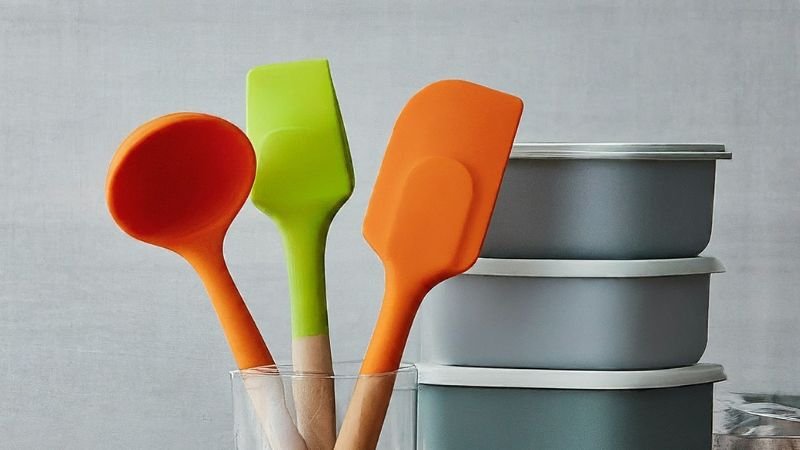Silicone has become a kitchen staple due to its versatility, durability, and non-stick properties. But can you really microwave silicone? This question has puzzled many home cooks. Let’s dive in and find out the truth.
Generally, yes, silicone is microwave safe. This versatile material can withstand high temperatures, making it a convenient choice for various kitchen tasks.
However, there are a few key factors to consider before popping your silicone items into the microwave.
What is Silicone?
Silicone is a synthetic polymer derived from silica, the same material found in sand. Its unique properties make it an ideal material for kitchenware, including baking molds, utensils, and storage containers.
- Heat Resistance: High-quality food-grade silicone can typically withstand temperatures ranging from 40°F to 450°F. This wide temperature range makes it suitable for both freezing and microwave use.
- Microwave Safety: Most silicone products designed for kitchen use are safe for microwave ovens. Look for labels or markings indicating microwave safety.
Is All Silicone Microwave Safe?
While most silicone products are microwave safe, it’s essential to check the manufacturer’s instructions. Look for labels or markings indicating microwave safety. High-quality silicone products are designed to withstand high temperatures without releasing harmful chemicals.

Factors Affecting Silicone’s Microwave Safety
Several factors influence whether your silicone item is suitable for microwave use:
Silicone Type: Food-grade silicone is generally safe for microwave use. Avoid silicone products labeled for other purposes.
Temperature Ratings: Check the product’s temperature rating. It should be able to withstand high microwave temperatures.
Product Design: Some silicone products, such as those with metal inserts, might not be microwave safe.
Benefits of Using Silicone in the Microwave
Even Heating: Silicone distributes heat evenly, preventing hot spots and ensuring your food cooks thoroughly.
Non-Stick Properties: Silicone’s non-stick surface makes cleanup a breeze, saving you time and effort.
Durability: Silicone can withstand repeated microwave use without warping or melting.
Food Safety: High-quality silicone is non-toxic and doesn’t leach chemicals into your food.
Tips for Using Silicone in the Microwave Safely
Check Manufacturer’s Instructions: Always prioritize the manufacturer’s guidelines for microwave use.
Avoid Overheating: Prolonged microwave exposure can damage silicone. Monitor your food closely.
Cool Down Gradually: Allow hot silicone items to cool down before handling to prevent burns.
Proper Cleaning: Wash silicone products with mild soap and water before and after use.

Silicone vs. Other Kitchen Materials
Here’s a comparison table on the features of silicone and other materials used in kitchenware:
| Feature | Silicone Kitchenware | Plastic Kitchenware | Glass Kitchenware | Metal (Stainless Steel) Kitchenware |
|---|---|---|---|---|
| Heat Resistance | Withstands temperatures from -40°C to 230°C | Melts at temperatures above 100°C | Can handle oven temperatures up to 300°C | Can withstand temperatures up to 250°C |
| Non-Stick Properties | Naturally non-stick | Varies; some require non-stick coatings | Generally non-stick, especially with oil | Non-stick, suitable for searing and browning |
| Durability | Resistant to twisting and folding | Prone to cracking and breaking | Resistant to thermal shock, but can break with impact | Highly durable, resistant to corrosion and scratches |
| Cleaning Ease | Dishwasher-safe, easy to clean | Dishwasher-safe, but can retain odors | Dishwasher-safe, non-porous surface | Dishwasher-safe, easy to clean |
| Chemical Leaching | Generally non-reactive | Can release BPA and other chemicals | Chemically inert, no leaching | Non-reactive, safe for all foods |
| Versatility | Freezer to microwave safe | Limited by temperature resistance | Oven-safe, microwave use may vary | Oven and stovetop-safe, versatile cooking |
| Environmental Impact | Eco-friendly, recyclable | Concerns with BPA and environmental impact | Recyclable, production may be energy-intensive | Recyclable, long lifespan, eco-friendly option |
Common Silicone Products Safe for Microwave Use
Silicone Baking Molds
Perfect for making cupcakes, muffins, and other treats.
Silicone Utensils
Ideal for stirring and mixing food directly in microwave-safe containers.

Silicone Lids
Help to retain moisture and prevent splatters.
Silicone Bowls and Plates
Convenient for reheating leftovers or preparing small meals.
Silicone and Microwave Safety: FAQs
Q: Can I put metal inserts in silicone molds in the microwave? A: No, metal inserts can cause sparks and damage your microwave. Avoid using silicone products with metal parts in the microwave.
Q: Is it safe to store food in silicone containers after microwaving? A: Yes, food-grade silicone is safe for storing food, even after microwaving. However, allow the container to cool completely before sealing it.
Q: Can I sterilize silicone baby bottles in the microwave? A: While some silicone baby bottles might claim to be microwave safe, it’s generally recommended to sterilize them using boiling water or a steam sterilizer for optimal hygiene.
Q: Will silicone melt in the microwave? A: High-quality food-grade silicone can withstand high temperatures. However, prolonged exposure to extreme heat can damage the material.
Q: Can I put empty silicone molds in the microwave? A: It’s generally not recommended to microwave empty silicone molds as it can cause uneven heating and potentially damage the product.
Conclusion
Silicone is a versatile and convenient material for kitchen use, including microwave cooking. By following the guidelines and tips outlined in this blog post, you can safely enjoy the benefits of silicone in your microwave. Remember to always check the manufacturer’s instructions and prioritize food safety.